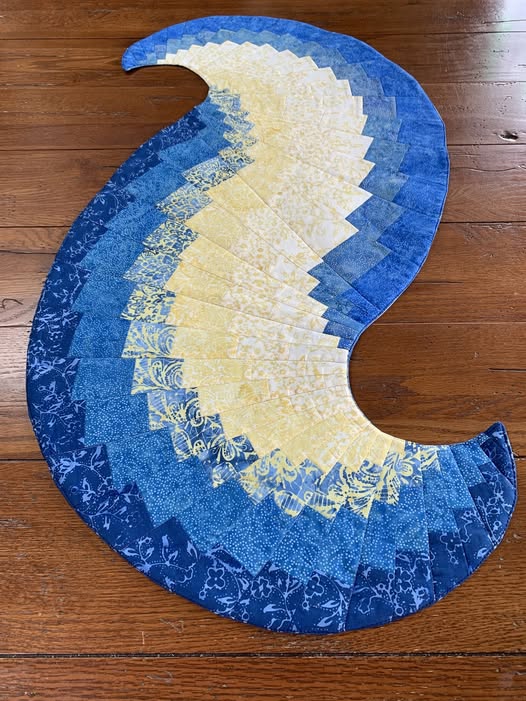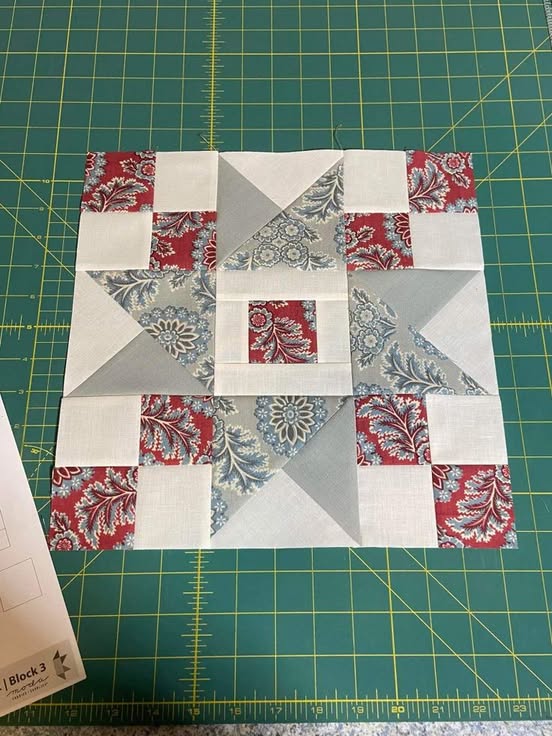
If you’re passionate about quilting, Mastering Classic Quilt Blocks is an essential step toward creating beautiful and timeless pieces. Quilt blocks are the foundation of every quilt, and understanding their structure allows quilters to design patterns that are both visually stunning and technically precise.
Whether you are a beginner exploring patchwork for the first time or an experienced quilter looking to refine your skills, learning classic blocks will enhance your creativity and craftsmanship.
Classic quilt blocks such as the Log Cabin, Nine Patch, and Churn Dash have been loved for generations due to their symmetry, versatility, and historical significance.

Each block tells a story and can be adapted in countless ways with modern fabrics, color schemes, and layouts. By mastering these patterns, you not only connect with quilting tradition but also gain the tools to design innovative and personalized quilts.
This guide will provide step-by-step explanations, tips, and techniques for constructing, assembling, and arranging classic quilt blocks. You’ll learn how to choose fabrics, achieve accurate cuts, and ensure that seams align perfectly to create a professional-looking quilt that lasts for years.
Classic quilt blocks are built from simple geometric shapes — squares, triangles, and rectangles — which, when pieced together, form intricate patterns. Understanding these fundamentals is key to mastering classic quilt blocks.
The Nine Patch is one of the simplest and most recognizable blocks. It involves sewing nine equal squares together in a 3×3 grid. Though simple, it offers endless variations in color and layout.
The Log Cabin block is another iconic pattern, characterized by a central square surrounded by strips of fabric (logs). Its structure allows for creative color placement, creating a sense of depth and movement.
Blocks like Flying Geese and Bear’s Paw may appear complex, but once you understand their construction, they become approachable. Each consists of triangles and rectangles arranged to create a repeating motif.
Mastering the alignment and symmetry in these blocks ensures your quilt looks polished. Accurate measuring, cutting, and stitching are crucial to maintaining uniformity.
Experimenting with rotation and placement of blocks adds dynamic visual effects. Simple changes in orientation can transform traditional blocks into contemporary designs.
One of the most exciting aspects of quilting is the wide variety of classic quilt blocks available to quilters. While some blocks are simple and quick to make, others require more advanced techniques. Let’s take a closer look at some of the most popular blocks and tips for mastering them.
The Nine-Patch Block is one of the simplest yet most iconic quilt blocks. It consists of nine smaller squares arranged in a 3×3 grid. This block serves as the foundation for many other quilt patterns, making it an essential piece in a quilter’s toolbox. To master this block, start by cutting your squares accurately and sewing them together with consistent seam allowances.
To successfully create classic quilt blocks, you need the right tools and materials. Using quality supplies improves accuracy and overall results.
A rotary cutter, self-healing cutting mat, and quilting ruler are essential for precise cutting. Straight, even edges are crucial for block alignment.
High-quality cotton fabric is preferred for its durability and ease of handling. Mix light, medium, and dark shades to achieve depth in your quilt. Pre-wash fabrics to prevent shrinking and color bleeding.
Use cotton or polyester thread that complements your fabrics. Consistent thread weight ensures smooth stitching without puckering.
A sewing machine with a straight stitch is ideal for piecing blocks. Hand-sewing is also an option for a traditional touch, though it requires patience and time.
An iron and pressing board are vital for flattening seams and maintaining block shape. Proper pressing gives your quilt a professional finish.
Creating flawless quilt blocks involves precision and patience. Mastery of techniques ensures blocks fit together seamlessly.
Cut fabrics accurately according to your pattern measurements. Inconsistent cuts lead to misaligned seams and uneven blocks.
Use a ¼-inch seam allowance, the standard in quilting. This maintains consistency and allows blocks to align correctly.The Flying Geese Block is a versatile block that can be used to create a wide range of patterns. It consists of a large central triangle with two smaller triangles on either side. To master Flying Geese, practice your triangle-piecing technique and ensure that all your angles are sharp and precise.
The Star Blocks are a bit more advanced, but once you’ve mastered the basics, they’re a great way to add intricate designs to your quilts. Popular star blocks include the Sawtooth Star and the Eight-Point Star. These blocks require careful cutting and piecing, so be sure to follow the instructions carefully and take your time.
Chain piecing multiple units saves time and keeps your project organized. This method helps maintain consistent stitch length and tension.
Press seams carefully after sewing. Pressing instead of ironing prevents fabric distortion and preserves block shape.
Check block dimensions as you complete each unit. Trim excess fabric or uneven edges to ensure uniformity across all blocks.
Take your time with each step. Precision and patience result in professional-looking blocks that can be combined into complex quilt designs.
Once you’ve mastered the fundamentals, classic quilt blocks can be applied creatively in various projects.
Combine different block types in a single quilt to produce unique visual effects. For instance, pairing a Nine Patch with a Flying Geese block creates contrast and movement.
Small-scale projects like pillow covers, table runners, or wall hangings are excellent ways to experiment with block layouts and colors.
Modern quilting can incorporate traditional blocks with solid fabrics, asymmetrical layouts, or negative space for a contemporary look.
Memory quilts benefit from classic blocks by incorporating fabrics with sentimental value. Old clothing, blankets, or t-shirts can be turned into heirloom quilts.
Adjusting block size alters visual impact. Oversized blocks make a bold statement, while miniature blocks are suitable for decorative items or smaller quilts.
Finish quilts with quilting stitches to add texture and depth. Hand or machine quilting enhances block patterns and overall aesthetic.
1. What are classic quilt blocks?
Classic quilt blocks are traditional geometric fabric patterns used as the building blocks of quilts, such as Log Cabin, Nine Patch, and Flying Geese.
2. Can beginners learn classic blocks?
Yes. Simple blocks like the Four Patch or Nine Patch are ideal for beginners and help build confidence before attempting more complex patterns.
3. What fabrics work best for quilting?
Cotton fabrics are recommended for durability and ease of handling. Pre-wash fabrics to prevent shrinking and color transfer.
4. How can I ensure blocks are the same size?
Accurate measuring, consistent ¼-inch seam allowance, and pressing seams flat are essential for uniform block sizes.
5. Can I mix modern and traditional designs?
Yes. Combining traditional blocks with modern fabrics or layouts creates unique quilts with both classic and contemporary appeal.
6. How do I keep my quilt flat and square?
Accurate cutting, careful stitching, and proper pressing after each seam help maintain a flat, square quilt.
7. What is the best way to finish a quilt?
Layer the quilt top with batting and backing, quilt through all layers, and finish with binding for a professional look.
Mastering Classic Quilt Blocks gives you the foundation to create timeless, beautiful quilts. By learning traditional patterns, precise cutting, and assembly techniques, you can produce quilts that are both functional and artistic.
Experimenting with colors, block orientation, and fabric combinations allows your creativity to shine. Share your results and insights to inspire others and continue the rich tradition of quilting craftsmanship.
